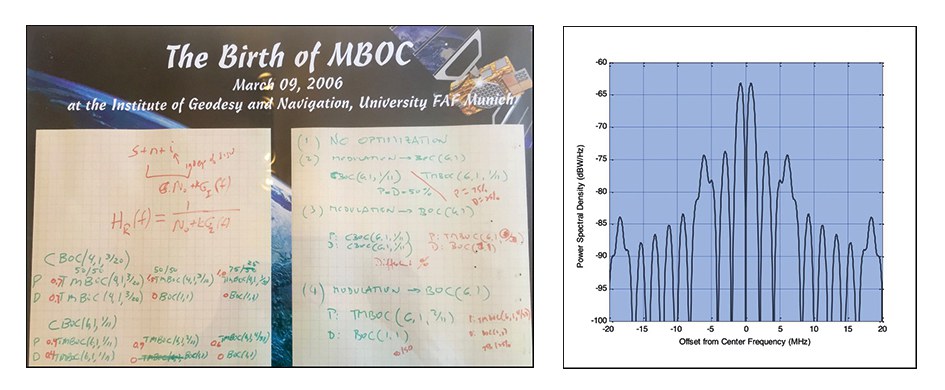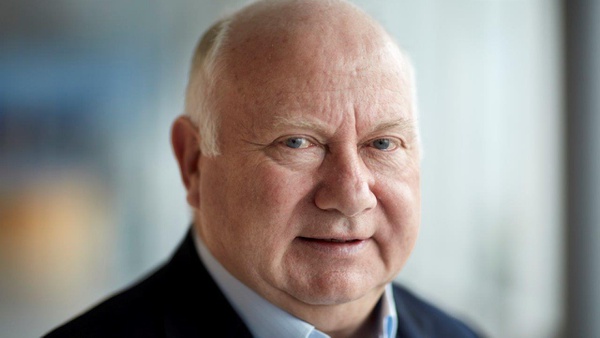Author: Prof. Dr.-Ing. habil. Dr. h. c. Emeritus of Excellence Günter W. Hein
9 March 2006: The Birth of MBOC, the Interoperable Signal of the European GALILEO Satellite Navigation System
It took four years (from 2000 to 2004) for Europe and the United States to reach an agreement on the “peaceful coexistence” (compatibility and interoperability) of signals of the European Galileo system and the American Global Positioning System (GPS). There was a complete lack of basic signal technology for ensuring the compatibility of navigation signals. For this reason, the project began by developing a mathematical “coexistence” of navigation signals in the frequency band and by defining threshold and tolerance values.
The director of the then Institute of Geodesy and Navigation, Professor Dr. Günter W. Hein, represented Germany in the negotiation group of the European Commission. On 26 June 2004, the Agreement on the Promotion, Provision and Use of Galileo and GPS Satellite-based Navigation Systems and Related Applications was signed by the United States and the member states of the European Union. As the European side was not entirely satisfied with the outcome of the negotiations, however, it was contractually agreed that both sides would continue to work on the optimization of the joint binary offset carrier signal BOC (1.1) on the L1 frequency. Many meetings were held over a period of almost two years but failed to produce results on account of the rigid, formal approach of such international negotiations.
In the meantime, the signal team of Professor Hein had taken large steps to optimize the respective signal and the various target parameters of signals such as precision, minimal disturbance due to multipath scattering, requirements of national security, etc. The result was a mixed binary offset carrier, the MBOC signal, which is a weighted combination of two BOC signals. BOC modulation tolerates another, already existing signal in the middle of the signal frequencies and yet still has a broad band width. The maxima of both side signals are arranged beside the already existing signal.
 Left: Original MBOC recordings during the discussions | Right: New MBOC modulation
Left: Original MBOC recordings during the discussions | Right: New MBOC modulation
The question now was how to discuss this result with the United States and with other European states without political and formal constraints and how to gain acceptance for an additional agreement. Professor Hein had the idea of a “non-meeting” – with the American and European experts only and without any political representatives – in the University’s geodetic measurement dome, which he was able to convene with the authorization of the European Commission. The plan was to hold informal discussions for one week, but then, on 9 March 2006, after only one day, agreement was achieved. The new MBOC signal was born.
On 26 July 2007, the United States and the European Union announced their intention to adopt an improved design for the common signal and to make it available. This interoperable signal is now implemented in Galileo Open Service, in GPS IIIA, and in all other GNSS.
In 2017, Professor Hein and his team received the European Inventor Award of the European Patent Office for their development of the Galileo signal.
Lead Image: Members of the American-European working group celebrate their agreement on the MBOC modulation for the common GPS and Galileo L1 signal in front of the geodetic measurement dome: (left to right) Chris Hegarty (USA), Tony Pratt (UK), Jean-Luc Issler (F), John Owen (UK), Jose-Angel Avila-Rodriguez (UniBw M), John Betz (USA), Sean Lenahan (USA), Stefan Wallner (UniBw M), and Günter W. Hein (UniBw M).
Image source Prof. Hein's portrait: epo.org
